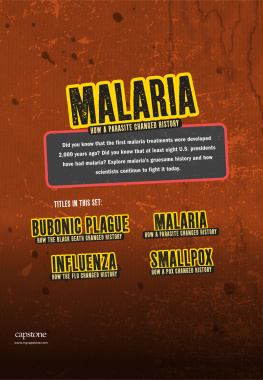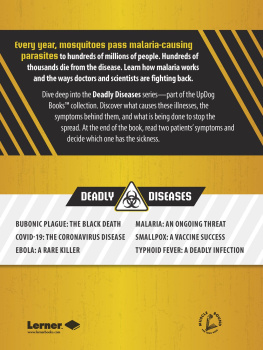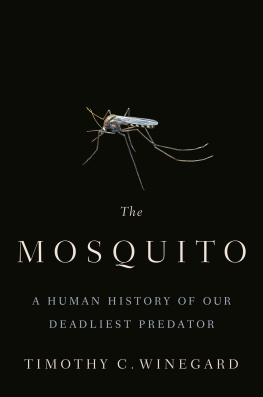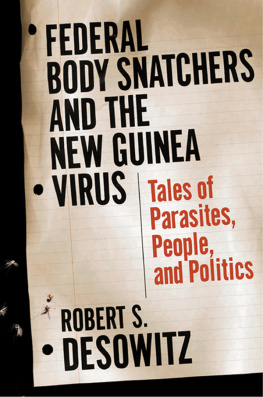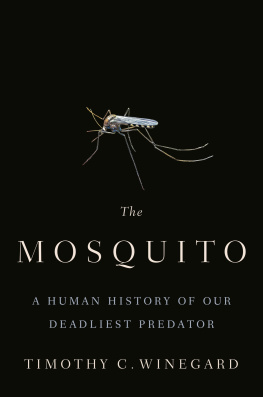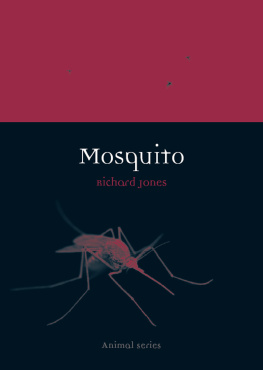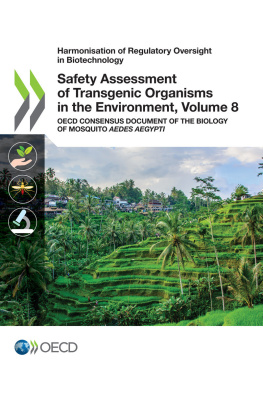Richard C. Wilkerson - Mosquitoes of the World (Volumes 1 and 2)
Here you can read online Richard C. Wilkerson - Mosquitoes of the World (Volumes 1 and 2) full text of the book (entire story) in english for free. Download pdf and epub, get meaning, cover and reviews about this ebook. year: 2021, publisher: Johns Hopkins University Press, genre: Romance novel. Description of the work, (preface) as well as reviews are available. Best literature library LitArk.com created for fans of good reading and offers a wide selection of genres:
Romance novel
Science fiction
Adventure
Detective
Science
History
Home and family
Prose
Art
Politics
Computer
Non-fiction
Religion
Business
Children
Humor
Choose a favorite category and find really read worthwhile books. Enjoy immersion in the world of imagination, feel the emotions of the characters or learn something new for yourself, make an fascinating discovery.

- Book:Mosquitoes of the World (Volumes 1 and 2)
- Author:
- Publisher:Johns Hopkins University Press
- Genre:
- Year:2021
- Rating:4 / 5
- Favourites:Add to favourites
- Your mark:
Mosquitoes of the World (Volumes 1 and 2): summary, description and annotation
We offer to read an annotation, description, summary or preface (depends on what the author of the book "Mosquitoes of the World (Volumes 1 and 2)" wrote himself). If you haven't found the necessary information about the book — write in the comments, we will try to find it.
The definitive reference on the biology, evolution, ecology, and diversity of all known species of the worlds mosquitoes. Critical for entomologists, public health professionals, and epidemiologists across the world.
Biting multiple times on two, three, or more different hosts, it is no surprise that some species of mosquitoes have co-evolved with pathogens. For humans and other animals, the result has been some of the most challenging diseases known. It has been said that Anopheles gambiae, as the primary transmitter of malaria parasites to humans, is the most dangerous animal in the world. Certainly malaria has killed more people than all the wars that ever took place. Even now, despite drugs and mosquito control, malaria claims the lives of 405,000 per year. The vast majority of mosquito species are not involved in pathogen transmission to humans, but those that are make a huge impact on global health.
In this two-volume set, three of the worlds leading experts on mosquito disease, ecology, and systematics offer readers unique insights into the fascinating world of mosquitoes while illustrating their diagnostic morphological features in detail. Comprehensively addressing the natural diversity of mosquitoes, the book explains their life histories, bionomic traits, and the physiological and physical adaptations they evolved in response to ever-changing environmental conditions. Mosquitoes are one of the best-known groups of insects, making this book a great starting place for anyone who would like to understand entomology by knowing the details about a representative family.
Volume One contains a review of the biology and diversity of mosquitoes. Biology is treated in the following chapters:
Evolution
Nomenclature
Distribution
Development
Dormancy
Mosquito Movement
Feeding and Nutrition
Excretion
Copulation and Insemination
Egg Development and Oviposition
The chapters on biology are followed by a well-illustrated summary of the characteristics of all 41 genera and of representative species of mosquitoes. This treatment of the morphological diversity of mosquitoes is accompanied by a glossary of all morphological terms used.
Volume Two features
a long-awaited comprehensive mosquito taxonomic catalog detailing the current taxonomic and systematic status of all 3,698 valid species and subspecies, 41 genera, and 187 subgenera
a list of all taxa for definitive use of nomenclature
complete lists of species synonyms, distributions, key taxonomic works, and newly defined informal names
origins of scientific names
Readers will discover that some mosquitoes undertake courtship rituals, while others guard their eggs, feed solely on earthworms, or can survive as immatures under ice sheets or in salt-encrusted pools. Hundreds of drawings and high-resolution, close-up images illustrate the text. The most complete reference work on mosquitoes ever produced, Mosquitoes of the World is an unmatched resource for entomologists, public health professionals, epidemiologists, and reference libraries.
Richard C. Wilkerson: author's other books
Who wrote Mosquitoes of the World (Volumes 1 and 2)? Find out the surname, the name of the author of the book and a list of all author's works by series.

